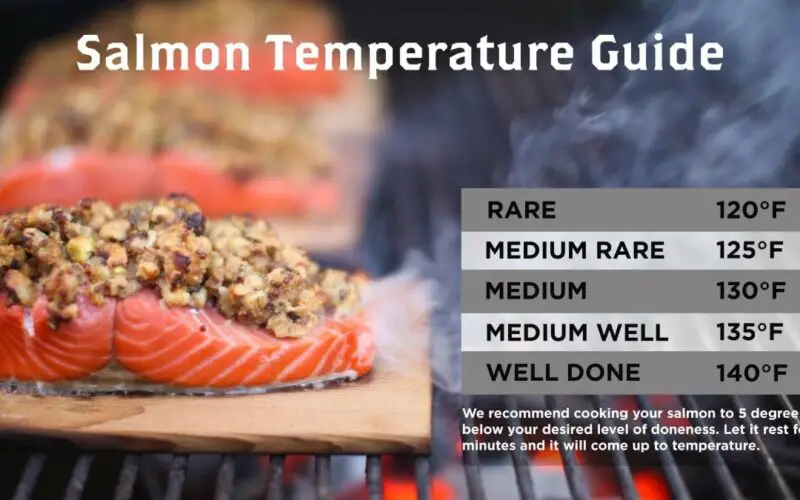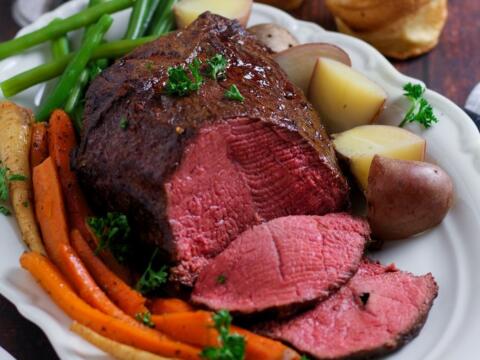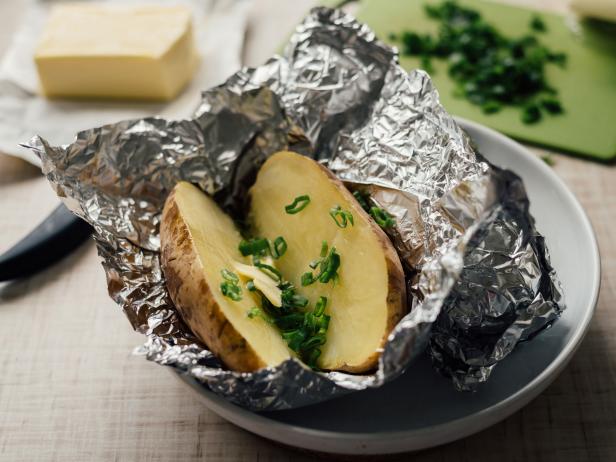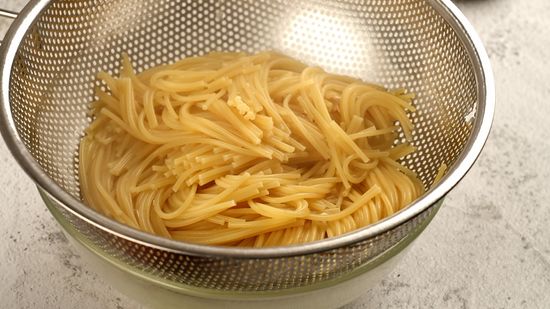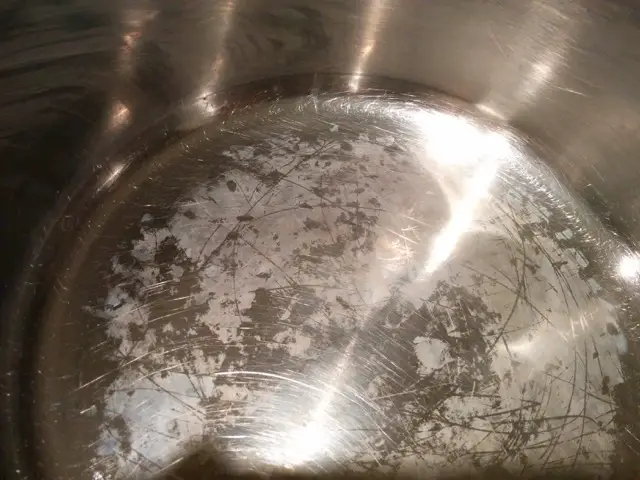The Great Debate on Letting Salmon Rest After Cooking
Salmon is one of the most popular fish in the world, prized for its rich, buttery flavor and versatile cooking options. But when it comes to cooking salmon, there’s a great debate on whether or not to let it rest after it’s done cooking. Some say that letting salmon rest can make it dry and overcooked, while others swear by it as the key to a perfectly cooked fillet. In this article, we’ll explore the science behind resting meat and whether or not you should apply it to your salmon recipes.
The Science Behind Letting Meat Rest
First, let’s take a look at why resting meat is important in the first place. When you cook meat, especially steak or fish, the heat causes the protein fibers to contract and push moisture towards the center of the cut.
If you cut into the meat right away, those juices will spill out onto your cutting board instead of staying inside where they belong. That means drier, less flavorful meat. Instead, if you wait a little bit after cooking before cutting into it (aka letting it “rest”), those juices redistribute throughout the entire cut. That means juicier, more flavorful meat with tender texture.
How Resting Allows The Juices To Redistribute
The amount of time you need to let meat rest depends on how thick it is and how well-done you want it. Generally speaking, 10 minutes is a good rule of thumb for thicker cuts like steak. Fish cooks relatively quickly though so, depending on how hot your oven or grill is and how thick your fillets are, fish can be optimally cooked in six minutes or even less.
Here’s what’s happening when you let your cooked salmon rest:
- During cooking, the heat causes the moisture to be forced towards the center of the salmon fillet
- If you cut into your salmon immediately after cooking it, those juices are going to spill out onto your cutting board instead of staying inside where they belong
- If you wait a minute or two, those juices will slowly begin to redistribute throughout the entire fillet, making it juicier and more flavorful
So overall, letting your salmon rest for a few minutes after cooking can make a big difference in flavor and texture.
The Ideal Temperature for Cooked Salmon
Before we get into the debate on resting salmon, let’s quickly review what temperatures salmon should be cooked to and why temperature is so important to begin with.
Importance of Properly Cooking Salmon
Salmon needs to be cooked properly to ensure both flavor and safety. Undercooked fish can lead to foodborne illness, so it’s important that salmon be cooked all the way through. On the other hand, overcooked salmon can become dry and tough, losing much of its delicious flavor.
Optimal Temperature For Cooked Salmon
The ideal temperature range for fully cooked salmon is from 145°F (63°C) to 165°F (74°C). This ensures that bacteria are killed and the fish is fully cooked through. According to the USDA Food Safety and Inspection Service (FSIS), visual cues like flesh color and texture are not reliable indicators of doneness.
How Different Temperatures Affect Texture, Flavor, And Safety
- Cooking salmon to an internal temperature of 120°F (49°C) will result in rare steak-like texture
- At 130°F (54°C) you get medium-rare, where the flesh is tender and still a bit translucent in the center
- Cooking salmon to an internal temperature of 140°F (60°C) yields fully cooked, flaky fish with a slightly pink center
- An internal temperature of 145°F (63°C) or higher will produce flaky cooked salmon that is opaque throughout. Beyond that temperature, you’ll risk overcooked and tough fish.
The Debate on Resting Cooked Salmon
Now that we’ve reviewed proper cooking temperatures for salmon let’s get back to the debate about resting. There are arguments both for and against letting salmon rest after it’s cooked.
Arguments Against Letting Salmon Rest
- There’s a risk of overcooking your salmon if you let it sit too long after you take it off the heat source
- Your salmon’s texture can change as it cools down, making it less appealing to the palate
- If you’ve crisped up the skin during cooking, letting it sit for too long could cause it to become less crisp
Arguments For Letting Salmon Rest
- Your salmon will have a more even cook if you let it rest for a few minutes after cooking. This is especially important if you’ve cooked your salmon on one side only so that the thicker end gets some extra time to cook through without overcooking the thinner end.
- The texture will be better overall as the juices redistribute throughout the entire fillet, rather than just gathering in spots.
- A rested salmon fillet tastes better than one that has been cut into right away because those juices have time to settle and absorb back into the fish.
How to Rest Cooked Salmon
If you do decide to let your salmon rest after cooking, here are some methods for achieving optimal results:
Plate vs. Rack Resting
- Plate resting: Place the cooked salmon directly onto a plate, then cover it with foil to keep it warm while it rests. This method works well for smaller fillets that can sit directly on a plate without falling apart. Just be careful not to let them sit in their own juices as they might get soggy.
- Rack resting: For larger fillets or those that need a bit more separation from the moisture they might release, use a wire rack rather than a plate. Set the wire rack over a sheet of foil in case any juices run off, and let the salmon rest on top of the rack.
Foil Covering vs. Uncovered
A key decision when resting cooked salmon is whether or not to cover it with foil. Here are some pros and cons of each:
- Foil covering:
- Pros: Keeps the salmon warm and prevents moisture from evaporating too quickly. Also makes it easier to contain any juices that might escape.
- Cons: Can make the skin less crisp if left on for too long, but this is not always an issue with fish as with steak where reapplying heat can make the crust soggy.
- Uncovered:
- Pros: The skin will stay more crisp in this scenario.
- Cons: With a larger piece of salmon, it could start to cool down significantly if you leave it uncovered for too long. This is unlikely with a smaller fillet or cutlet. Without foil, the salmon may also dry out a little faster and overcook in the worst case.
Timing Considerations
The amount of time you let your salmon rest will depend on a few factors:
- How hot was your cooking surface?
- How thick is your salmon?
- How long did your fish cook for?
Generally, it’s best to aim for at least one minute and up to five minutes, depending on the thickness of your salmon. Thicker fillets will need longer resting times since they’ll retain more heat, while smaller fillets might only need 30 seconds or so.
The Role of Salmon Size and Cooking Method in Resting Time
How Salmon Size Affects Resting Time
The size of your salmon fillet will also affect how long you let it rest after cooking. For example:
- A half-inch-thick salmon steak may not need any resting at all since it will cook through rather quickly and high heat tolerance allows the fibers to settle faster.
- An inch-thick fillet should rest for about 2-3 minutes.
- A 2-3 inch-thick fillet can benefit from up to five minutes of resting time after cooking.
Resting Time Variations with Different Cooking Methods (Grilling, Baking, Broiling, Etc.)
The way you cook your salmon will also affect how long it should rest. For example:
- Grilled salmon: After you’ve taken your salmon off the grill, let it rest for a few minutes. Depending on how hot your grill is, a minute or two of resting time should be enough to get those juices flowing (again, depending on your preference and how well-done you prefer your fish to be).
- Baked salmon: Remove the salmon from the oven and let it rest for around 2-3 minutes before serving.
- Broiled salmon: Let your salmon rest for 5-7 minutes after broiling so that the juices can redistribute throughout the entire piece.
- Pan-seared salmon: Cover the cooked fillet with foil or a tight-fitting lid and let it rest for 2-3 minutes before serving.
Frequently Asked Questions About Letting Salmon Rest After Cooking
Can You Check if Salmon Is Done Without Cutting It Open?
You can test if your salmon is done by probing the center part of the fish with a fork, then twisting gently. If the flesh flakes apart easily and is opaque all the way through, it’s done. You could also use a thermometer to check; When inserted in the thickest part of the salmon, it should reach an internal temperature of 145°F (63°C).
Will Letting Salmon Rest Bring It Closer to Room Temperature?
No, letting cooked salmon rest will not bring it closer to room temperature, especially if you’ve covered it with foil or placed it on a wire rack. Because it retains heat well, you should wait at least five minutes after removing it from the oven or grill before taking its temperature.
Can You Reheat Rested Salmon?
Yes, you can definitely reheat rested salmon. Just be sure to reheat it over gentle heat – such as in the oven, under a grill/broiler only briefly or pan-seared using a little oil. Microwaving is not recommended as it will inexplicably alter the texture of your fish: dry on the surface and soggy on the inside.
Other Considerations When Cooking and Serving Salmon
While letting your salmon properly rest after cooking is important, there are other things to consider when preparing and serving this delicious fish:
Importance of Using High Quality Salmon
Make sure to use high-quality salmon from carefully harvested and responsibly managed sources. Farmed salmon might be cheaper but in most cases, wild-caught salmon has superior taste and texture even if it’s more expensive. Choose bright orange-pink fillets that don’t have any discoloration or large white stripes (which are fat) for optimal flavor and moisture content (40% water).
Tips for Seasoning and Preparing Salmon Before Cooking
- Squeeze a bit of fresh lemon juice on your fillet before seasoning it with salt and pepper. A citrusy tang complements the rich, buttery flavor of cooked salmon perfectly.
- Avoid over-seasoning with salt or other spices because this may detract from the natural flavor of the fish itself. Spare but adequately applied measures is always best.
- Clean your fillet well so that you avoid dabbing off any excess moisture. Pat dry with a clean tea towel ensuring that there’s no moisture left behind.
- Choose your preferred cooking method based on your taste (e.g. grilling for smoky, charred flavor, broiling for a crispy skin).
Serving Suggestions and Accompaniments
- Potatoes, rice dishes, and pasta are all ideal side dishes to salmon. Think about flavors that complement the richness of the fish.
- Creating smaller portions can add beautifully to the presentation of your plate by interweaving two vibrant colors and textures onto your presentation surface. For example, Cut small pieces of smoked salmon into thin strips and weave them together with thinly cut cucumber slices for a beautiful yet simple appetizer.
- A well-dressed green salad also goes brilliantly with salmon.
Conclusion: To Rest or Not to Rest? It Depends.
While there are arguments both for and against letting salmon rest after it’s cooked, in most cases, allowing it to sit for just a few minutes will result in juicier, more delicious fish. Remember to experiment a little with cooking times and methods to see what works best with your preferences and equipment!
1. What happens if I don’t let salmon rest after cooking?
Not allowing the salmon to rest after cooking can cause it to become dry and lose its moisture. This can lead to an unpleasant taste and texture. Resting allows the juices to redistribute, ensuring the salmon is moist and tender.
2. How long should I let my salmon rest after cooking?
Ideally, you should let your salmon rest for about 5-10 minutes after cooking. This allows the juices to evenly distribute throughout the fish, leading to a moist and flavorful result.
3. Will letting salmon rest affect the cooking time?
No, letting salmon rest after cooking will not affect the cooking time. You should still cook your salmon for the appropriate amount of time, given its size and thickness.
4. Is there a specific technique for resting salmon?
Yes, there is a specific technique for resting salmon. Simply remove it from the heat source and place it on a plate or cutting board. Loosely cover it with foil or another light covering. Do not cut into the salmon immediately; allow it to rest undisturbed for at least 5 minutes.
